Chapter 7: Hallucinogens
By the end of this chapter, you should be able to:
- Examine the dominant beliefs and attitudes in our society with regard to chemical use. (LO1)
- Define the characteristics of the major classes of drugs. (LO2)
- Identify and summarize the addiction process and the characteristics thereof. (LO3)
Overview
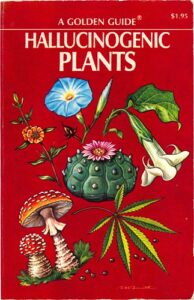
Hallucinogens are a tricky batch of drugs that can act like stimulants or act as depressants. This group of drugs may produce a sensory effect leading to additional alternations in perception, cognition, and mood (APA, 2022). These drugs can also be called psychedelic drugs and include: LSD, psilocybin mushrooms, peyote, MDMA, ketamine, PCP, DMT, and marijuana. These drugs are generally sorted into two categories: classic hallucinogens (like LSD) and dissociative drugs (like PCP) (NIDA, 2015). While there is a negative stigma associated with this group of drugs, there is burgeoning research that suggests there are medical and therapeutic uses for these drugs. Generally, there is a slim chance of: toxicity, addiction, dependence, and neurological affects during or after use (Lowe, 2022; Matzopoulos et al., 2022).
LSD (Lysergic acid diethylamide)

LSD is very strong drug in this category that mimics neurotransmitters exerting its psychoactive effects on the user. It is unique because it interacts with both serotonin and dopamine receptors (Lowe, 2022). LSD has many aliases including but not limited to: acid, sugar cubs, trips, tabs, or windowpanes. Derived from a fungus (show at left), it is nearly undetectable and water soluble. The most common way to take this drug, besides orally, is for LSD-soaked paper to be cut into small, but potent, circles (NIDA, 2015).
Early in its history, LSD was used to treat alcoholism and neurosis. But more recent studies have seen improvements in users who have the following diseases or situations: Alzheimer’s disease, schizophrenia, multiple sclerosis, criminal behavior, autism, frigidity, and many others (Lowe, 2022; Oehen & Gaser, 2022).
Short-term sides effects of LSD are (NIDA, 2015):
- Increased blood pressure and temperature
- Dizziness and fatigue
- Appetite suppression
- Feelings of numbness, weakness, and tremors
- Increase impulsivity and moodiness
Psilocybin Mushroom
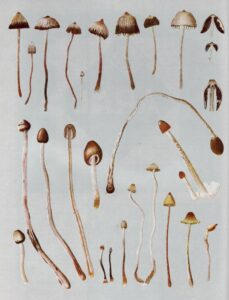
The mushrooms (shown at right) has play an integral role in cultural traditions throughout Central and South America for centuries (Matzopoulos et al., 2022; Rootman et al., 2022). The effects users experienced were considered magical up to deep religious and spiritual experiences (Lowe, 2022; NIDA, 2015; Arce & Winkelman et al., 2021). Because of its vital cultural role, it is one of the most studied psychedelic drugs. Currently, there are promising therapeutic uses for psilocybin mushrooms, like treating painful conditions, heart conditions, or mood and anxiety disorders, especially in the era of the COVID-19 pandemic (Lowe, 2022; Matzopoulos et al., 2022; Nkadimeng et al., 2020). The mushrooms can be consumed, orally, in a variety of ways ranging from raw to brewed with tea (NIDA, 2015); studies indicate that small doses are effective in treating symptoms without impairing regular functioning of the individual (Rootman et. al, 2022).
Short-term side effects of psilocybin mushrooms are (NIDA, 2015):
- Sense of ease or relaxation
- Anxiety
- Introspection
- Poisoning due to misidentification of mushrooms
Peyote
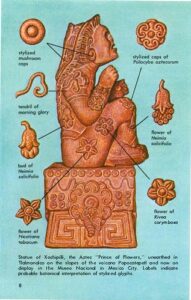
Peyote is a small cactus with its main ingredient being mescaline. It has been used in Central and North America during cultural and religious experiences. The intoxicating liquid, produced when processing the cactus, that it is usually consumed via tea to tamp down the excessively bitter flavor (NIDA, 2015; APA, 2022; Hinojosa, 2018). The future of peyote is uncertain as it is not being used in a sustainable way and therefore can not regrow as quickly as it is consumed (APA, 2022; Ermakova et al., 2020). Learn more about peyote harvest and some of the practices from this article: Peyote Veneration in Challenging Times: Issues of Land and Access in South Texas (2018) and watch the video below called Drinking Psychedelic Peyote Juice in Mexico (2021).
Short-term side effects of peyote are (NIDA, 2015):
- Increased heart rate and temperature
- Ataxia
- Significant sweating
MDMA (Methylenedioxymethamphetamine)
This drug has an amphetamine-style experience with added hallucinations. It is typically sold as ecstasy. Individuals will experience the high very quickly and for a long time, even up to days (APA, 2022). Users of this drug may feel euphoric arousal with spiritual experiences. Research suggests that there are some long-term side effects like addiction, memory dysfunction, lack of control, and when used in high doses, it can be deadly (APA, 2022; Pantoni et al., 2022). And, other research has provided evidence that it can be beneficial in low-doses for safely treating intense disorders like PTSD (Mitchell et al., 2021; Arluk et al., 2022) and other anxiety-related experiences and disorders (Makunts et al., 2022; Oehen & Gaser, 2022)
Some side effects that can be experienced are (Oehen & Gaser, 2022)
- Pain
- Cramps
- Dissociative symptoms
- Sensory hallucinations
Ketamine
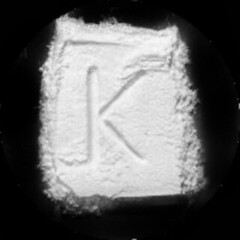
Ketamine, a cousin to PCP, often results in the user being disoriented and hallucinating. Typically, this drug is ingested in pill or powder form (APA, 2022). At one time, ketamine was used in veterinarian offices (NIDA, 2015), but eventually came to treat a variety of painful conditions and addiction (Carboni, 2021; Marcus & Bruchas, 2021; Pribish, 2020), but more recently, it has been used to treat unique cases of bipolar-depression, where other treatments have proven ineffective (APA, 2022; Rawat et al., 2022; Yavi et al., 2022; Pribish, 2020). Because of its lack of odor and color, it has been used to spike drinks in order to commit sexual assault (NIDA, 2015). Ketamine is poorly understood or lacks the research to support potential benefits (Carboni, 2021; Marcus & Bruchas, 2021).
Side effects can include (Carboni, 2021):
- Hallucinations
- Nightmares or intense dreams
- Delusions
- Anesthesia (Pribish, 2020)
PCP
PCP was originally developed for surgical uses, but later it was realized that it produces hallucinogenic responses (APA, 2022) and is now sought out for recreational uses (Ryu et al., 2020). This drug can consumed in a number of ways, though when it is smoked it is usually combined with marijuana or tobacco (NIDA, 2015).
Symptoms of use, can include (APA, 2022):
- Schizophrenia (both positive and negative symptoms)
- Agitation
- Delirium
- Disorientation
- Hallucinations
DMT and Ayahuasca
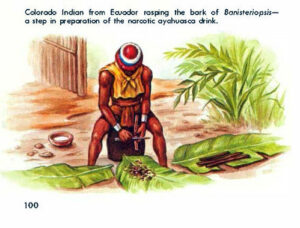
DMT is a powerful psychoactive ingredient found in a plant species native to the Amazon. Synthetic versions of this drug are usually a white powder that is smoked. Ayahuasca is made from similar Amazonian plants as well, but is usually consumed in the form of tea in South America (NIDA, 2015; APA, 2022). These drugs are characterized by short periods of hallucinations (Timmermann et al., 2018; Alamia, 2020) and while it is generally safe to use, it cannot be easily broken down in the body and may negatively react with other drugs (Lowe, 2022). Ayahuasca is typically reserved for spiritual and cultural ceremonies but can also act as an aphrodisiac and in the diagnosis of other disorders (Lowe, 2022; APA, 2022). It is a trending component of South American tourism that began in the Amazon, but is spreading to other South American countries as well and beyond into North America and Europe (Lowe, 2022).
Side effects can include (APA, 2022):
- Nausea
- Vomiting
- Tinnitus
- Euphoria
Marijuana
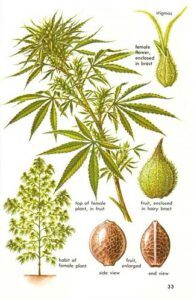
Also known as cannabis, these species of plants make up a very popular recreational drug. In fact, globally is it the most popular controlled substance (Graves et al., 2020; Latif & Garg, 2020) The psychoactive component known as THC, is contained in the flowers of the plant (APA, 2022). This drug is typically smoked and the user feels the high for roughly three hours. Learn more about cannabis, how it effects the brain, medicine, communities, and businesses by watching the playlist below.
Side effects can include (APA, 2022):
- Euphoria
- Hallucinations
- Lack of memory or focus
- Food cravings
- Anxiety
- Tolerance
- Withdrawal
Research also suggests that there could be severe effects on the cardiovascular system by using this drug, check out this study for more information: The Impact of Marijuana on the Cardiovascular System: A Review of the Most Common Cardiovascular Events Associated with Marijuana Use (Latif & Garg, 2020).
References
Alamia, A., Timmermann, C., Nutt, D., VanRullen, R., Carhart-Harris, R. (2020) DMT alters cortical travelling waves. eLife 9:e59784 https://doi.org/10.7554/eLife.59784
American Psychological Association (2022). Cannabis. APA. https://dictionary.apa.org/cannabis
American Psychological Association (2022). Hallucinogen. APA. https://dictionary.apa.org/hallucinogen
American Psychological Associations (2022). LSD. APA. https://dictionary.apa.org/lsd
American Psychological Association (2022). Peyote. APA. https://dictionary.apa.org/peyote
Arluk, S., Matar, M.A., Carmi, L. et al.(2022) MDMA treatment paired with a trauma-cue promotes adaptive stress responses in a translational model of PTSD in rats. Transl Psychiatry 12, 181 . https://doi.org/10.1038/s41398-022-01952-8
Bahji, A. (2019, December 2). Is marijuana bad for your brain? [Video]. YouTube. https://www.youtube.com/watch?v=KyVSuI6JyOs
Carboni E, Carta AR, Carboni E & Novelli A (2021) .Repurposing Ketamine in Depression and Related Disorders: Can This Enigmatic Drug Achieve Success? Frontiers in Neuroscience, 15:657714. doi: 10.3389/fnins.2021.657714
Casarett, D. (2017, May 17). A doctor’s case for medical marijuana [Video]. YouTube. https://www.youtube.com/watch?v=KyVSuI6JyOs
Cort, B. (2018, September 25). What commercialization is doing to cannabis [Video]. YouTube. https://www.youtube.com/watch?v=KyVSuI6JyOs
dakota of earth (2021, January 2). Drinking psychedelic peyote juice in Mexico [Video’]. YouTube. https://www.youtube.com/watch?v=htwxsM7ZbEA
Ermakova, A., Whiting, C., Trout, K., Clubbe, C., Fowler, N., Terry, M. (2020). Ecology and conservation of peyote in Texas, USA: Comparative survey of Lophophora williamsii populations in Tamaulipan Thornscrub and Chihuahuan Desert. Journal of the Botanical Research Institute of Texas.
Graves, B., Johnson, T., Nishida, R., Dias, R., Savareear, B., Harynuk, J., Kazemimanesh, M., Olfert., J. & Boies, A. (2020). Comprehensive characterization of mainstream marijuana and tobacco smoke. Scientific Reports 10, https://www.nature.com/articles/s41598-020-63120-6#citeas
Hinojosa, S. (2018). Peyote veneration in challenging times: Issues of land and access in South Texas. Arcadia, 19, https://www.environmentandsociety.org/arcadia/peyote-veneration-challenging-times-issues-land-and-access-south-texas
Latif, Z & Garg, N. (2020) The impact of marijuana on the cardiovascular system: A review of the most common cardiovascular events associate with marijuana use. Journal of Clinical Medicine, 9(6). https://doi.org/10.3390/jcm9061925
Lowe, H., Toyang, N., Steele, B., Grant, J., Ali, A., Gordon, L., & Ngwa, W. (2022). Psychedelics: Alternative and potential therapeutic options for treating mood and anxiety disorders. Molecules, 27(8). https://doi.org/10.3390/molecules27082520
Makunts T, Jerome L, Abagyan R., & de Boer A (2022). Reported cases of serotonin syndrome in MDMA users in FAERS database. Frontiers in Psychiatry 12:824288. doi: 10.3389/fpsyt.2021.824288
Marcus, D. & Bruchas, B. (2021) Antidepressants: Where ketamine and dopamine collide eLife 10:e70148 https://doi.org/10.7554/eLife.70148
Matzopoulos R, Morlock R, Morlock A, Lerer B and Lerer L (2022). Psychedelic mushrooms in the USA: Knowledge, patterns of use, and association with health outcomes. Frontiers in Psychiatry 12:780696. doi: 10.3389/fpsyt.2021.780696
National Institute on Drug Abuse (2015). Hallucinogens and dissociative drugs. NIDA. Retrieved July 21, 2022 fromhttps://textbooks.whatcom.edu/marketing/wp-content/uploads/sites/25/2017/06/Hallucinogens-Dissociative-Drugs-NIDA.pdf
New Zealand Drug Administration (2022, February 17). Did you know: MDMA [Video]. YouTube. https://www.youtube.com/watch?v=AeK1biRUoSE
Oehen P and Gasser P (2022) Using a MDMA- and LSD-group therapy model in clinical practice in Switzerland and highlighting the treatment of trauma-related disorders. Frontiers in Psychiatry 13:863552. doi: 10.3389/fpsyt.2022.863552
Pantoni, M.M., Kim, J.L., Van Alstyne, K.R. et al. (2022). MDMA and memory, addiction, and depression: dose-effect analysis. Psychopharmacology 239, 935–949. https://doi.org/10.1007/s00213-022-06086-9
Pribish, A., Wood, N., & Kalava, A. (2020). A review of nonanesthetic uses of ketamine. Anesthesiology Research and Practice. https://doi.org/10.1155/2020/5798285
Rawat, R., Tunc-Ozcan, E., McGuire, T.L. et al. (2022). Ketamine activates adult-born immature granule neurons to rapidly alleviate depression-like behaviors in mice. Nature Communications, 13, 2650. https://doi.org/10.1038/s41467-022-30386-5
Rodríguez Arce JM & Winkelman MJ (2021) Psychedelics, Sociality, and Human Evolution. Frontiers in Psychol. 12:729425. doi: 10.3389/fpsyg.2021.729425
Rootman, J.M., Kiraga, M., Kryskow, P. et al. (2022). Psilocybin microdosers demonstrate greater observed improvements in mood and mental health at one month relative to non-microdosing controls. Scientific Reports 12, 11091 . https://doi.org/10.1038/s41598-022-14512-3
Ryu, I.S.; Kim, O.-H.; Lee, Y.E.; Kim, J.S.; Li, Z.-H.; Kim, T.W.; Lim, R.-N.; Lee, Y.J.; Cheong, J.H.; Kim, H.J.; Lee, Y.S.; Steffensen, S.C.; Lee, B.H.; Seo, J.-W.; Jang, E.Y. (2020). The Abuse Potential of Novel Synthetic Phencyclidine Derivative 1-(1-(4-Fluorophenyl)Cyclohexyl)Piperidine (4′-F-PCP) in Rodents. International Journal of Molecular Science , 21, 4631. https://doi.org/10.3390/ijms21134631
Timmermann C, Roseman L, Williams L, Erritzoe D, Martial C, Cassol H, Laureys S, Nutt D and Carhart-Harris R (2018) DMT Models the Near-Death Experience. Frontiers in Psychology. 9:1424. doi: 10.3389/fpsyg.2018.01424
Tribble, K. (2021, July 21). How marijuana reform could repair, reclaim, and restore communities [Video]. YouTube. https://www.youtube.com/watch?v=KyVSuI6JyOs
Yavi, M., Lee, H., Henter, I.D. et al. (2022). Ketamine treatment for depression: a review. Discover Mental Health 2, 9. https://doi.org/10.1007/s44192-022-00012-3
the active ingredient in more than 200 species of mushrooms.

